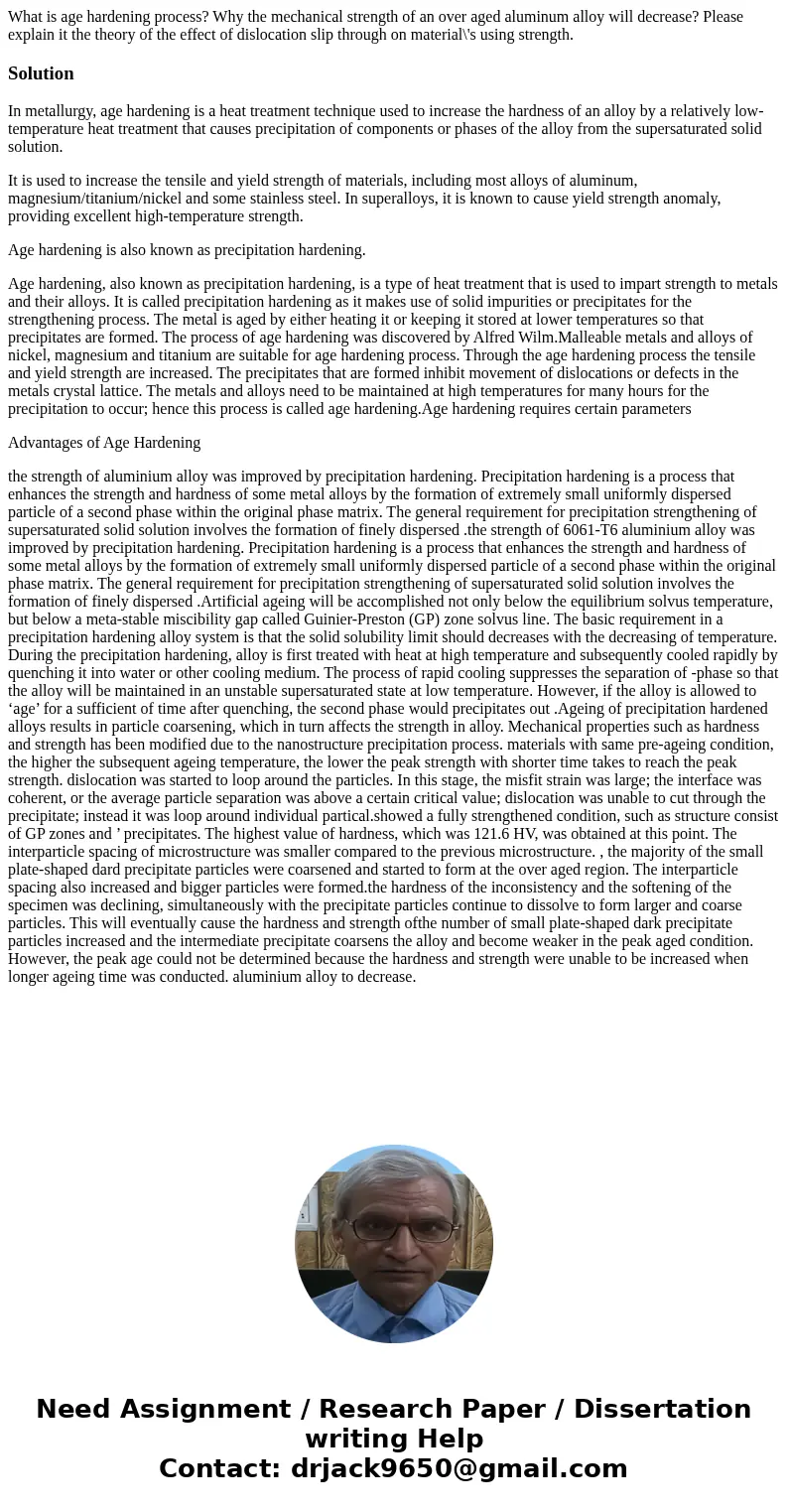What is age hardening process Why the mechanical strength of
Solution
In metallurgy, age hardening is a heat treatment technique used to increase the hardness of an alloy by a relatively low-temperature heat treatment that causes precipitation of components or phases of the alloy from the supersaturated solid solution.
It is used to increase the tensile and yield strength of materials, including most alloys of aluminum, magnesium/titanium/nickel and some stainless steel. In superalloys, it is known to cause yield strength anomaly, providing excellent high-temperature strength.
Age hardening is also known as precipitation hardening.
Age hardening, also known as precipitation hardening, is a type of heat treatment that is used to impart strength to metals and their alloys. It is called precipitation hardening as it makes use of solid impurities or precipitates for the strengthening process. The metal is aged by either heating it or keeping it stored at lower temperatures so that precipitates are formed. The process of age hardening was discovered by Alfred Wilm.Malleable metals and alloys of nickel, magnesium and titanium are suitable for age hardening process. Through the age hardening process the tensile and yield strength are increased. The precipitates that are formed inhibit movement of dislocations or defects in the metals crystal lattice. The metals and alloys need to be maintained at high temperatures for many hours for the precipitation to occur; hence this process is called age hardening.Age hardening requires certain parameters
Advantages of Age Hardening
the strength of aluminium alloy was improved by precipitation hardening. Precipitation hardening is a process that enhances the strength and hardness of some metal alloys by the formation of extremely small uniformly dispersed particle of a second phase within the original phase matrix. The general requirement for precipitation strengthening of supersaturated solid solution involves the formation of finely dispersed .the strength of 6061-T6 aluminium alloy was improved by precipitation hardening. Precipitation hardening is a process that enhances the strength and hardness of some metal alloys by the formation of extremely small uniformly dispersed particle of a second phase within the original phase matrix. The general requirement for precipitation strengthening of supersaturated solid solution involves the formation of finely dispersed .Artificial ageing will be accomplished not only below the equilibrium solvus temperature, but below a meta-stable miscibility gap called Guinier-Preston (GP) zone solvus line. The basic requirement in a precipitation hardening alloy system is that the solid solubility limit should decreases with the decreasing of temperature. During the precipitation hardening, alloy is first treated with heat at high temperature and subsequently cooled rapidly by quenching it into water or other cooling medium. The process of rapid cooling suppresses the separation of -phase so that the alloy will be maintained in an unstable supersaturated state at low temperature. However, if the alloy is allowed to ‘age’ for a sufficient of time after quenching, the second phase would precipitates out .Ageing of precipitation hardened alloys results in particle coarsening, which in turn affects the strength in alloy. Mechanical properties such as hardness and strength has been modified due to the nanostructure precipitation process. materials with same pre-ageing condition, the higher the subsequent ageing temperature, the lower the peak strength with shorter time takes to reach the peak strength. dislocation was started to loop around the particles. In this stage, the misfit strain was large; the interface was coherent, or the average particle separation was above a certain critical value; dislocation was unable to cut through the precipitate; instead it was loop around individual partical.showed a fully strengthened condition, such as structure consist of GP zones and ’ precipitates. The highest value of hardness, which was 121.6 HV, was obtained at this point. The interparticle spacing of microstructure was smaller compared to the previous microstructure. , the majority of the small plate-shaped dard precipitate particles were coarsened and started to form at the over aged region. The interparticle spacing also increased and bigger particles were formed.the hardness of the inconsistency and the softening of the specimen was declining, simultaneously with the precipitate particles continue to dissolve to form larger and coarse particles. This will eventually cause the hardness and strength ofthe number of small plate-shaped dark precipitate particles increased and the intermediate precipitate coarsens the alloy and become weaker in the peak aged condition. However, the peak age could not be determined because the hardness and strength were unable to be increased when longer ageing time was conducted. aluminium alloy to decrease.

 Homework Sourse
Homework Sourse